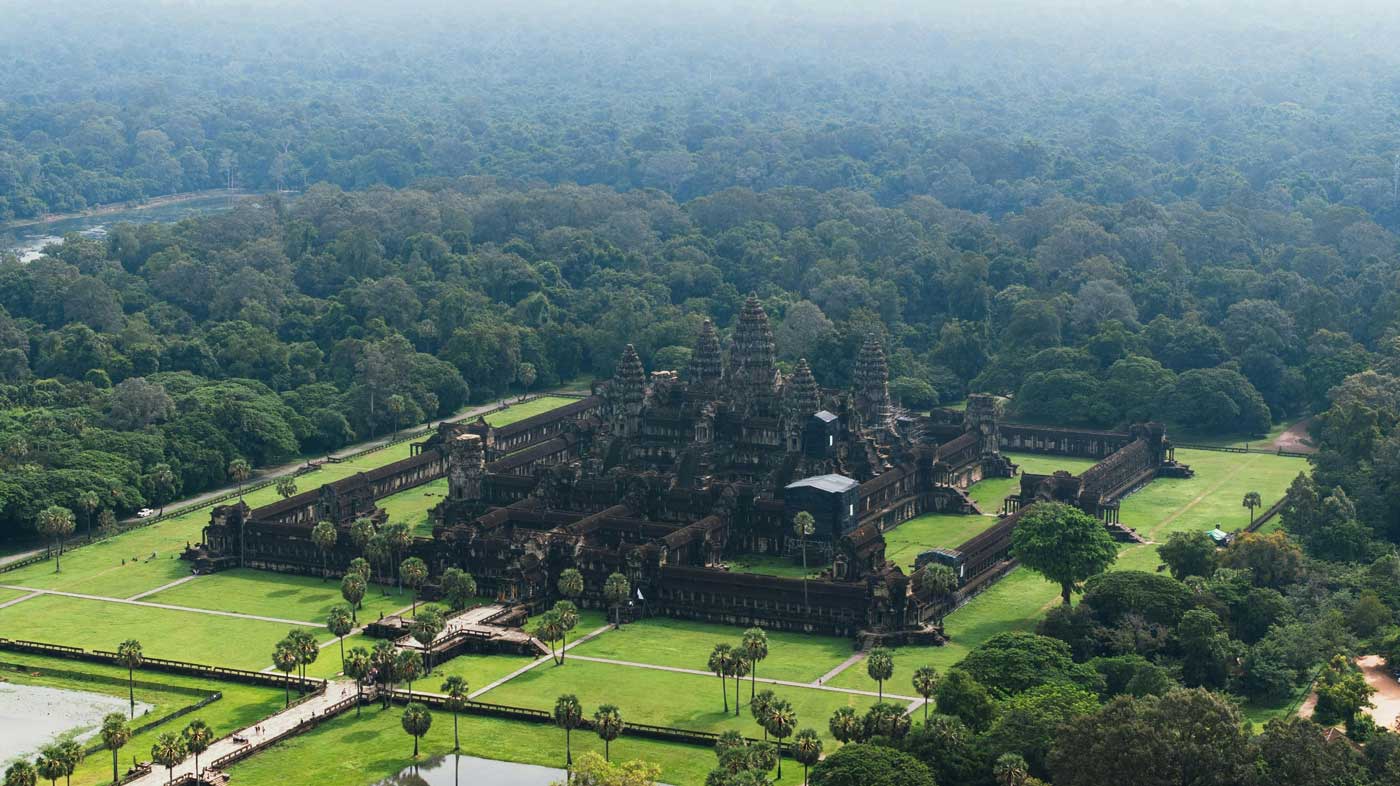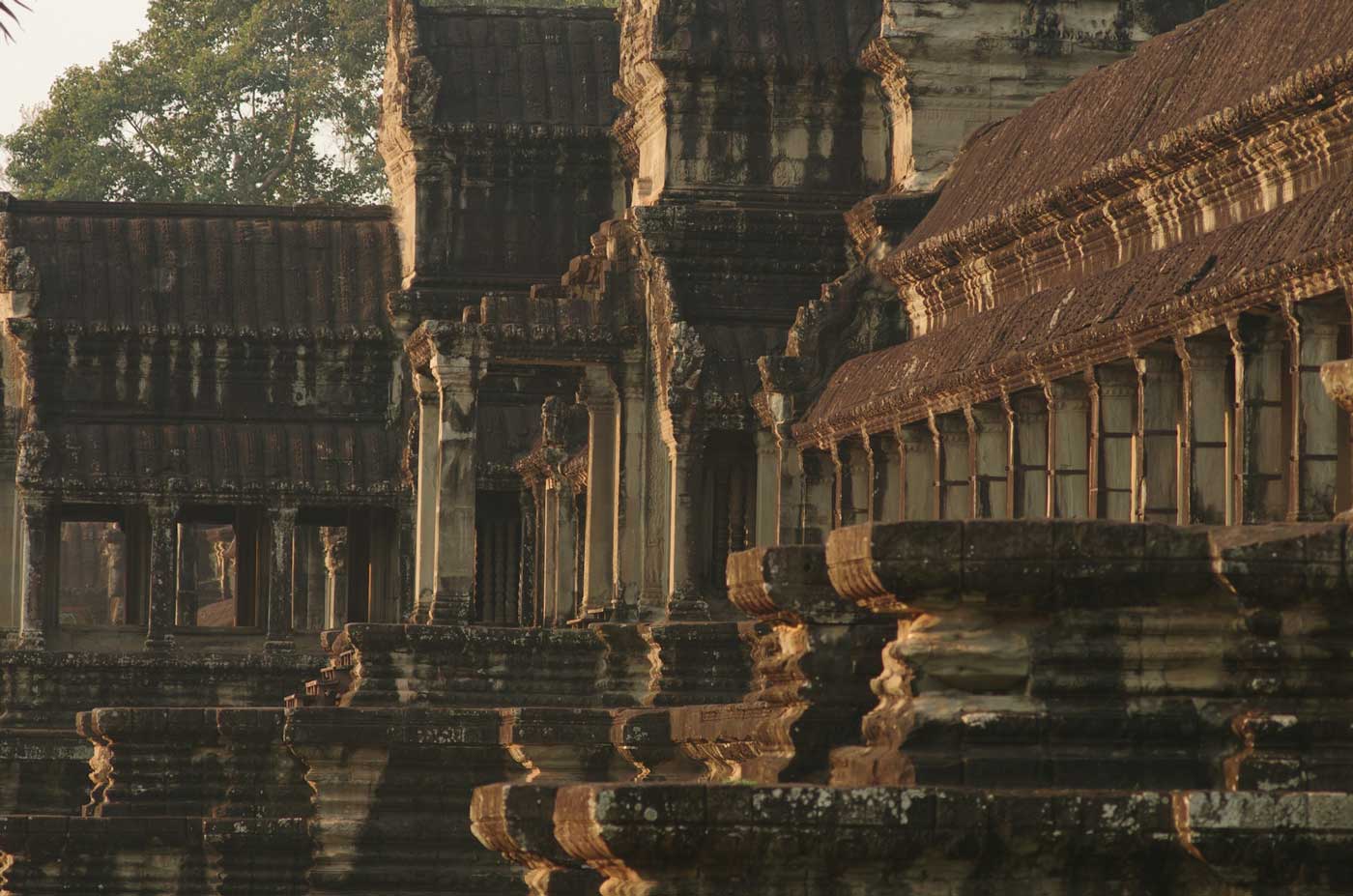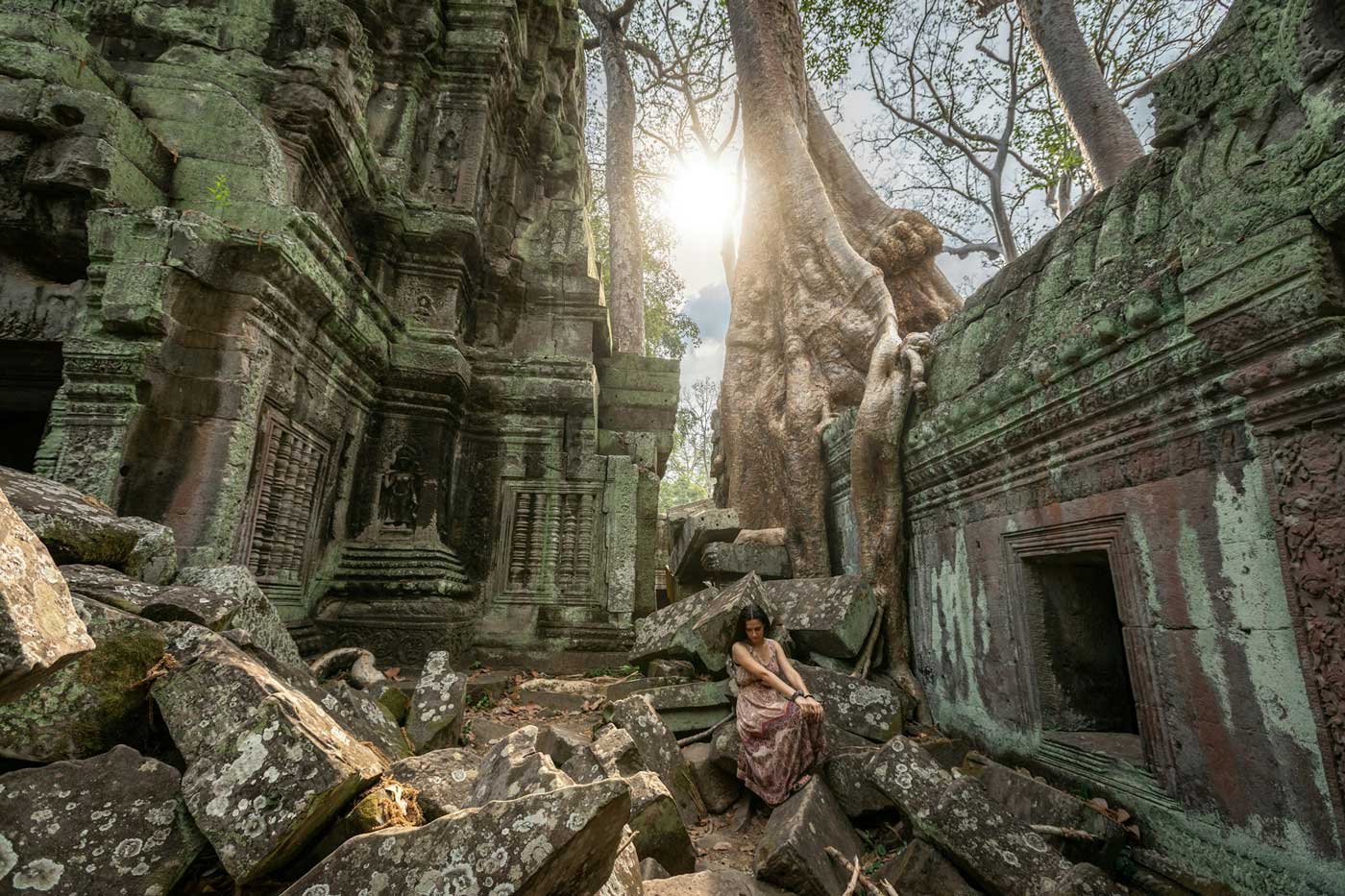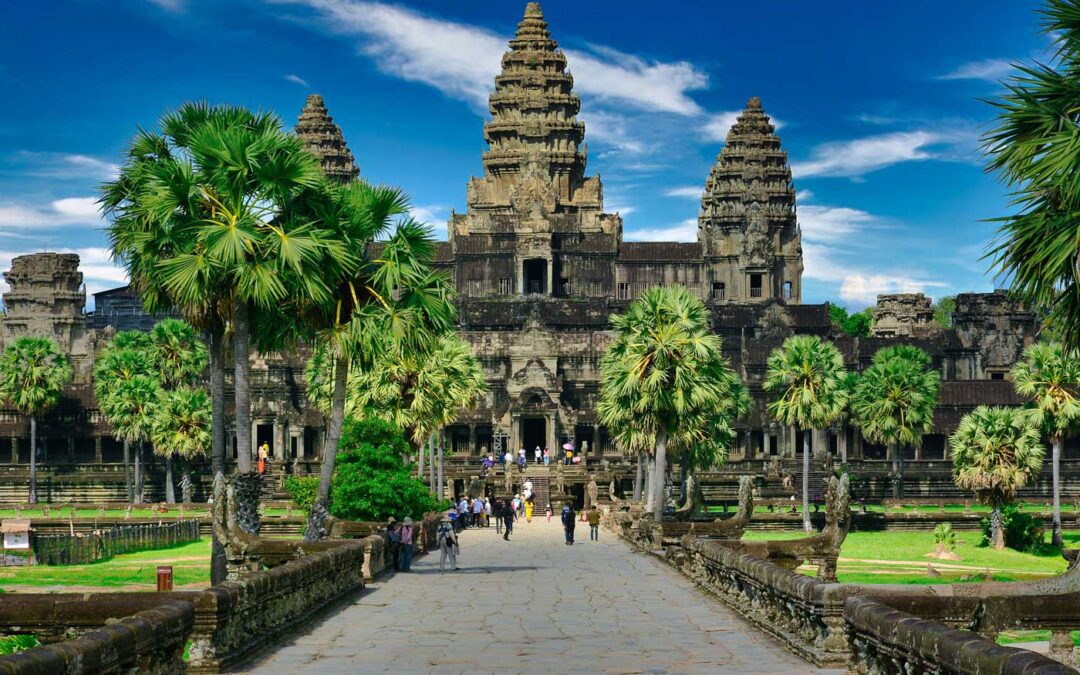Angkor Wat, located in Siem Reap, Cambodia, is renowned as the largest religious monument in the world. Originally constructed as a Hindu temple and later transitioning to a Buddhist site, Angkor Wat is a symbol of Cambodia’s rich cultural heritage and a marvel of ancient architecture. Here are detailed insights into Angkor Wat:
Historical Background:
- Construction Period: Angkor Wat was built in the early 12th century during the reign of King Suryavarman II. It served as the state temple and capital of the Khmer Empire.
- Purpose: Initially dedicated to the Hindu god Vishnu, it was gradually converted into a Buddhist temple towards the end of the 12th century.

Cambodia is home to Angkor Wat: The largest religious monument in the world
Architectural Features:
- Design: The temple exemplifies classical Khmer architecture, known for its grandeur and harmony of design. It features a massive three-tiered pyramid structure crowned by five lotus-like towers, symbolizing Mount Meru, the center of Hindu and Buddhist cosmology.
- Dimensions: The entire complex covers approximately 162.6 hectares (401 acres), including its surrounding moat and outer wall.
- Materials: Built primarily from sandstone blocks, the intricate carvings and bas-reliefs depict scenes from Hindu mythology, including the epics Ramayana and Mahabharata.
Cultural and Religious Significance:
- Symbol of Cambodia: Angkor Wat is a source of national pride and is featured on the Cambodian flag, reflecting its significance to the country’s cultural identity.
- World Heritage Site: Designated as a UNESCO World Heritage Site in 1992, recognizing its profound cultural, historical, and architectural value.
Archaeological and Historical Research:
- Restoration Efforts: Numerous international collaborations have been undertaken to preserve and restore Angkor Wat, protecting it from natural degradation and human impact.
- Archaeological Significance: Ongoing research and excavations continue to uncover insights into the history and functioning of the Khmer Empire.

The architecture brings tourists to visit the world’s largest religious monument, Angkor Wat
Visiting Angkor Wat:
- Tourism: It is one of the most popular tourist destinations globally, attracting millions of visitors each year who seek to explore its majestic architecture and historical depth.
- Best Time to Visit: The cool, dry season from November to February is considered the best time to visit for comfortable exploration.
- Guided Tours: Engaging a knowledgeable guide can enhance the experience by providing historical context and insights into the symbolism and stories depicted in the temple’s carvings.
Fun Facts:
- Orientation: Unlike most Khmer temples, Angkor Wat faces west, associated with Vishnu and potentially symbolizing the setting sun and the afterlife.
- Astrological Significance: The temple’s layout and architecture are aligned with astronomical elements, reflecting the Khmer’s advanced understanding of cosmology.
Angkor Wat stands as a testament to the ingenuity and vision of the Khmer civilization. Its spectacular architecture and enduring spiritual significance make it a must-see for anyone interested in history, religion, and cultural heritage. Whether you’re an academic, a spiritual seeker, or a traveler, Angkor Wat offers countless wonders to explore and appreciate.

The world’s largest religious monument welcomes visitors to explore and take photos
Frequently Asked Questions about Angkor Wat
Q1: What is Angkor Wat?
A1: Angkor Wat is a temple complex in Siem Reap, Cambodia, and is the largest religious monument in the world. It was originally constructed as a Hindu temple dedicated to Vishnu and later transformed into a Buddhist temple.
Q2: When was Angkor Wat built?
A2: Angkor Wat was built in the early 12th century during the reign of King Suryavarman II.
Q3: Why was Angkor Wat built?
A3: It was constructed as the state temple and capital of the Khmer Empire, dedicated to the Hindu god Vishnu. The temple symbolizes Mount Meru, the mythical center of the universe in Hindu and Buddhist cosmology.
Q4: How big is Angkor Wat?
A4: The Angkor Wat complex covers approximately 162.6 hectares (401 acres), making it the largest religious monument in the world.
Q5: Is Angkor Wat a UNESCO World Heritage Site?
A5: Yes, Angkor Wat was designated a UNESCO World Heritage Site in 1992 due to its cultural, historical, and architectural significance.
Q6: Can visitors go inside Angkor Wat?
A6: Yes, visitors can explore the temple’s interior and its extensive grounds. It’s recommended to hire a guide to better understand the historical and cultural context.
Q7: What are the best times to visit Angkor Wat?
A7: The best time to visit is during the cool, dry season from November to February. Sunrise and sunset visits are popular for capturing stunning photos and experiencing the serene beauty of the temple.
Q8: How do you get to Angkor Wat?
A8: Angkor Wat is located near the city of Siem Reap, Cambodia. Visitors usually fly into Siem Reap International Airport or travel by bus from nearby countries. The temple is easily accessible by tuk-tuk, taxi, or bicycle from Siem Reap.
Q9: How much is the entrance fee to Angkor Wat?
A9: Check ahead on the official Angkor Enterpreises website for pricing as tickets can vary from season to season.
Q10: What should I wear when visiting Angkor Wat?
A10: As a religious site, visitors are advised to dress modestly. This means covering shoulders and knees to show respect for the sacred environment.
You might also be interested in Borobudur, the largest Buddhist temple in the world.

